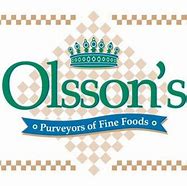 Loading... Please wait...
Loading... Please wait...- Telephone: 609 924 2210
- Home
- My Account
- Gift Certificates
- View Cart
Blog - Princeton
Harbison and the Jasper Hill story
Posted by The Cheese Man on 30th Jun 2020
In 1998 brothers Andy and Matheo Kehler along with their respective wives bucked a growing trend in the Northeast Kingdom of Vermont by restarting an old dairy farm locally known as the “Jasper Hill”. From the beginning they realized that they needed to keep as much value as possible on the farm rather than sending it out of state in the form of milk. It took them 5 years before their first cheeses hit the local market. By then they had created an environment that could provide employment opportunity in a farm setting in Vermont and a dairy that was producing European-style, cave aged, natural rind and, above all, higher-value cheeses. Their real break came when Cabot Creamery approached them to age a cloth-bound cheddar for them in the Jasper Hill cave. When the Cabot cheese won first place in the American Cheese Society’s conference in 2006, the brothers realized that they had better start thinking about expanding their cave capacity. 2 years later they opened the 22,000 sq ft aging facility that now not only ages the Jasper Hill and Cabot cheeses, but also cheese made by other local cheese makers. Jasper Hill now is one of the most advanced artisanal cheesemakers in this country.
One of our all-time Jasper Hill favorite cheeses is the Harbison. Based on a tradition that has names like “Epoisses”, “Petit Vacherin” and others attached to it, the cheese is of the spoonable kind. It is, in fact, so soft on the inside that it needs support to keep upright. Whereas the French and Swiss versions are aged in little wooden boxes, the Kehlers decided to wrap the cheese in pieces of spruce bark harvested on the farm to let the cheese keep its shape. The bark imparts a slightly woodsy and mustardy flavor to the cheese. The Kehler’s named the cheese after Anne Harbison, seen by many to be the grandmother of Greensboro, VT. She's active in the community, runs a bed and breakfast, and volunteers at the public library, and has known the Kehler brothers since they were children.
Have the cheese with medium bodied reds or slightly off-dry whites. Pair with something hearty, it can deal with it.

Melkbus 149 - Raw milk Gouda from a single farm with Black Truffle
Milk: Cow, Raw MilkCountry: Netherlands, HollandAccompaniment: Dry whites, fruity redsCheeses with the Melkbus name are made on single family farms and distinguished by the addition of a number exclusively used by that farm. Recipes and methods used, adhere closely to the traditions of Dutch farmhouse cheese production with the exception that shavings of Italian black truffles are added to the curds prior [...]

Alpine/Mountain Cheeses
If you have ever made hiking trips at altitude in mountainous regions and have trekked through the alpine meadows from one mountain to the next, you will know what the attraction of milk and cheese from those meadows will be. The grass is so lush and the meadow so full of flowers and herbs that with every step you [...]

Ashy Issues With The FDA
The FDA stopped another shipment of French ash-covered goat’s milk cheeses from coming into this country. This time it was a shipment intended for World’s Best Cheeses one of the Olsson’s Fine Foods’ vendors. The cheeses were considered to have an illegal colorant in the form of ash. This ash is of plant origin and [...]

Attraction of Smelly Cheese?
So what is the attraction? There is one theory that states that the attraction in the smell of bacteris on wahed-rind cheeses (Brevibacterium Linens) stems from the fact that this smell is closely related to that generated by bacteria that cause smells emanating from enclosed parts of the human body. Pheromones at play!!!! In other [...]

The funniest fact about "Stilton"
Stilton the cheese is named after the small town in Cambridgeshire by the same name where the cheese was first sold to travelers on the horse-drawn carriages that were going up and down the old roman road between London and York. The cheese was made by Frances Pawlet who lived and made cheeses in Melton Mowbray [...]
